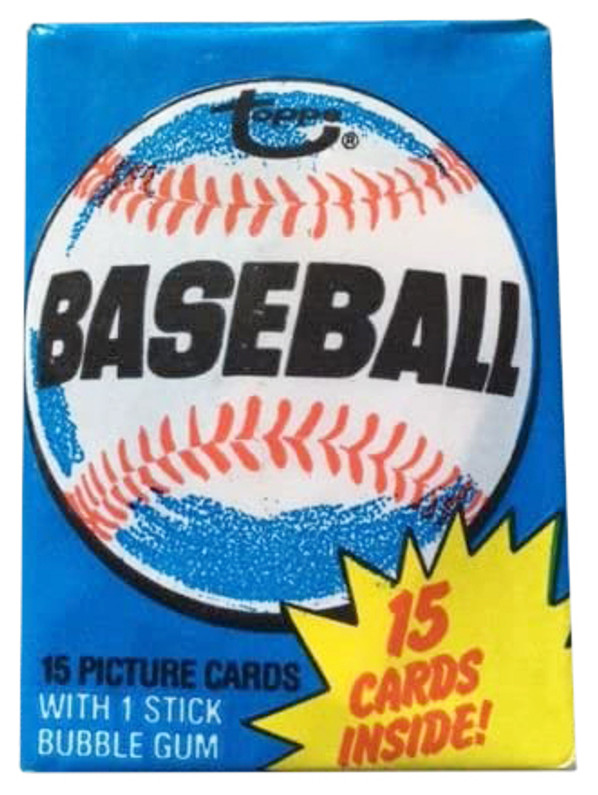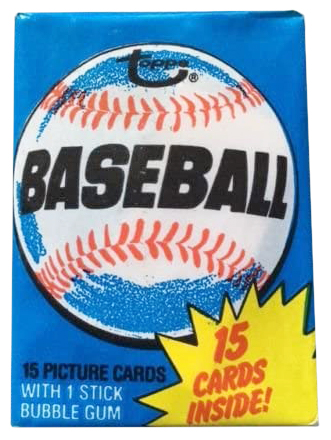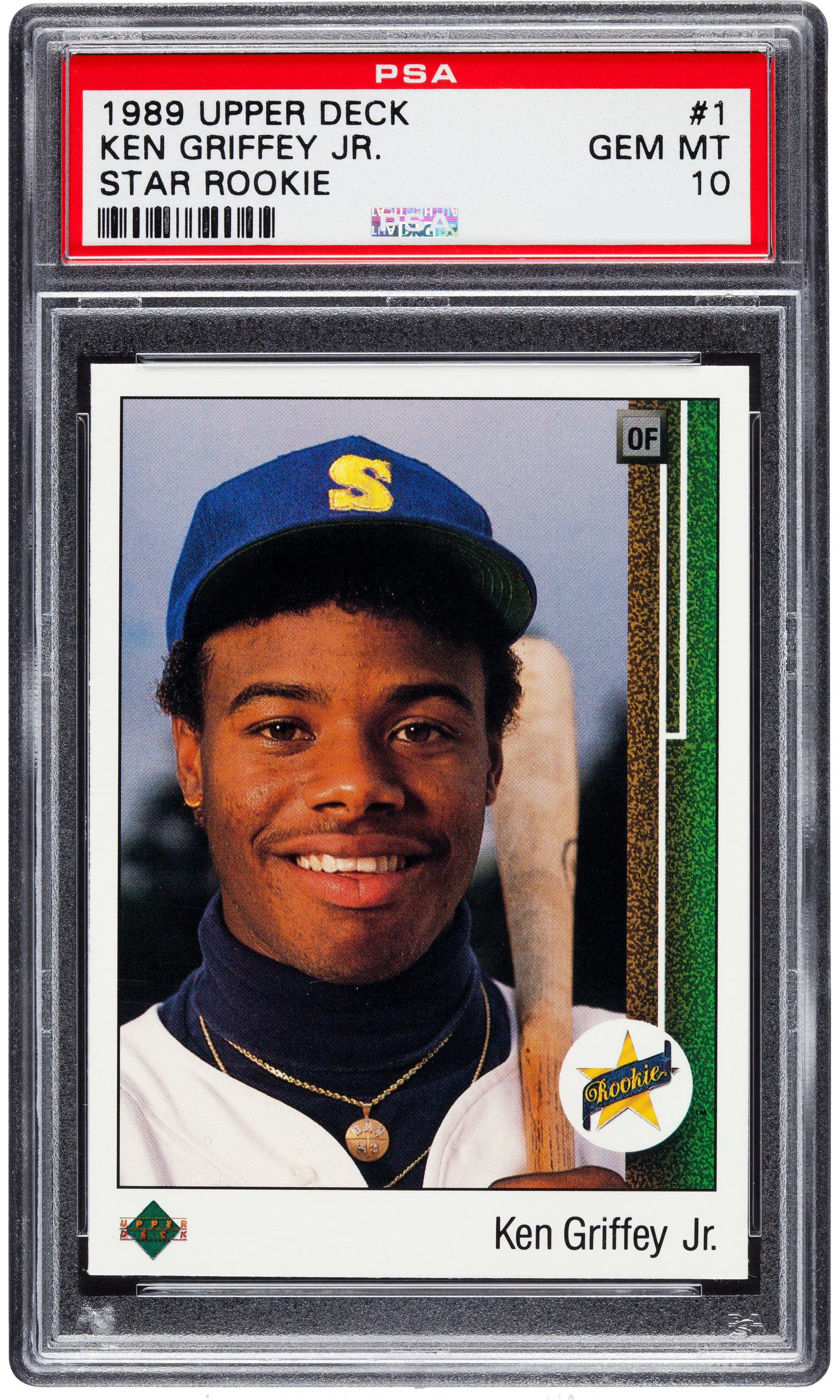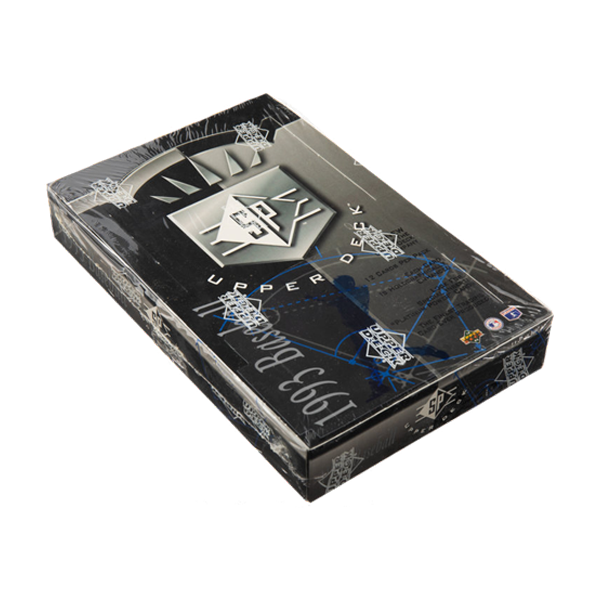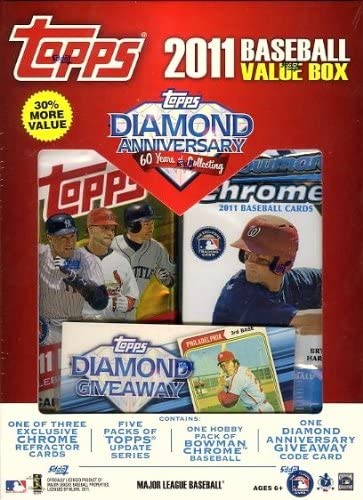Wax Packs and Boxes
Baseball cards are among the most recognizable and most numerous pieces of sports memorabilia. Collectors stubbornly hold onto rare cards as their value goes up, and many have spent years, or even decades, tracking down their favorite player’s rookie card. The iconic images, detailed stats on the back, and showing off one’s cards to another collector are the simple pleasures of this popular hobby.
However, another kind of baseball collector never actually lays eyes on the cards he’s amassed. It’s not a riddle, but a growing trend in sports memorabilia: collecting unopened packs and boxes of cards. These unopened packs are commonly known as ‘wax packs’ and have been steadily growing in value over the past few years.
Some collectors never open their wax packs with the resale market in mind, but others genuinely love the sense of mystery that comes from not knowing which cards they have. An unopened box could be full of duds or contain multiple treasures—why do you have to know?
What Are Wax Packs And Boxes?
Technicalities are essential in sports memorabilia, as we all know, so a more detailed definition of what counts as a
wax pack is in order.
In the past, the most common packaging for packs of sports was wax paper, which protected the cards (and sometimes gum) without sticking to them.
However, ‘wax packs’ do not refer to this sort of packaging but to any pack of cards that has never been opened. Indeed, packs of cards that come wrapped in cellophane (also called ‘cellos’) can be called a wax pack if they’ve never been opened. Each pack usually contains between 10 and 20 individual cards.
Wax boxes are unopened packages containing numerous packs of cards. The number a box holds varies more widely than the number of cards to a pack, but it can be anywhere from 12 to over 36.
Breaking a pack is the name for opening a box or package to see the cards inside.
The Most Popular Wax Packs and Boxes
While there are countless wax packs out there, here are some of the most popular boxes to add to your collection.
1980 Topps-Baseball
For a period between the
mid-1950s and 1980’s release, Topps was the only manufacturer of collectible
baseball cards. 1980 was their final year of total control over the market
before two more companies began their own series.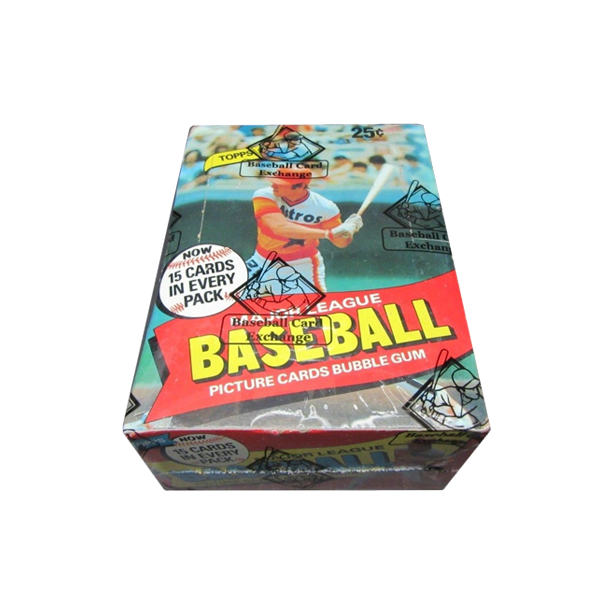
An unopened wax box from this series has 36 separate packs, each of which contains 15 cards. This was the first year to feature that amount of cards; keep in mind that if you buy a Topps wax box from earlier years, it will only have 12 cards per packs.
Authenticated, mint condition, sealed packs from this year fetch between 2500 and 3500 USD.
The 1980 Topps-Baseball release isn’t known for having many great rookie cards, but a particular one that’s among the most popular of all is Rickey Henderson’s. It would be a great find if you broke a package; a Ricky Henderson card from this set can be worth over $14,000, depending on its condition.
1987 Fleer-Baseball
Fleer was one of the companies that broke into Topps monopoly during the 1980s, and their 1987 release is notable for several reasons. The cards are beautifully designed, with light blue borders that have driven many a collector to distraction. Indeed, their value shot up in the same year they became printed, as collectors everywhere in America snapped them up.
Sealed boxes from Fleer’s 1980s sets hold 36 packs of 15 cards, for a total of 660 cards. The boxes all have a set of 12 cards representing the 1987 All-Star class, as well as a six-card set of ‘Headliners.’
An unopened 1987 Fleer box isn’t as expensive as some others on this list, usually costing in the low hundred dollar range.
Indeed, this set’s interest doesn’t come from its rarity but rather the fantastic cards that are possible to find inside. 1987 was, of course, Barry Bonds rookie year, but he wasn’t the only notable rookie. Bo Jackson also began his playing career that year, as did Bobby Bonilla, Will Clark, Chuck Finley, Wally Joyner, John Kruk, and Barry Larkin. That’s quite a list.
1989 Upper Deck-Baseball
Upper Deck changed the game within the game of baseball. They were a company that saw the heights and
importance the hobby would achieve, which motivated them to take producing baseball cards very seriously.
To that end, they introduced tamper-proof packaging, which makes it much easier to see whether a pack or box has been opened and authenticate it as a true wax pack. Upper Deck also started the practice of marking their cards with holograms to prevent counterfeiting.
Their major non-security innovation was including premium photographs on both the front and the back of the card.
These unique features increase collectors’ interest, but prices are still quite reasonable since this is a relatively recent release. You can find them for under $500 on eBay and other websites.
Although there are many cards worth looking for in this release, there’s no competition for the one that’s the most looked for. That would be Ken Griffey Jr.’s rookie card, showing him playing for the Seattle Mariners (valued at around $1500).
Other rookie cards to look for include Randy Johnson, Gary Sheffield, Omar Vizquel, John Smoltz, and Gregg Jefferies. Both Bo Jackson’s and Dale Murphy’s cards from this year are also highly sought after.
1993 SP Upper Deck-Baseball
After their 1989 debut, Upper Deck continued to innovate. For their fifth anniversary, the company created a new class of baseball cards. The ‘SP’ here stands for super-premium, and 1993 was the first year baseball cards with such a moniker were sold.
They brought a great offering of insert cards (also called chase cards, which fall outside of the full numbered series), a high standard of photography, and a subset of foil’ prospect cards.’
A 1993 SP Upper Deck wax box has a beautiful black and silver design. It contains 24 wax packs and 12 cards in each of them for 288 cards.
Like many of the wax boxes we’ve discussed, there’s one standout card that anyone who breaks the pack is praying to find. This time, it’s the Derek Jeter foil rookie prospect card.
The exciting thing about this card is not its rarity; there’s many of them around, but mint condition copies are scarce. It turns out that the foil cards are hard to store properly, so only 22 have achieved a perfect ten rating from PSA. One found in a wax box could fetch upwards of $100,000.
The value of that single card has pushed up the cost of a 1993 SP Upper Deck wax box to around $5000.
2011 Topps Update-Baseball
Now just about ten years old, the 2011 Topps Update remains an interesting set. Like the update sets that came
before it, the 2011 edition put out cards of rookies that made their debuts after they printed their first and second series, as well as new cards for players who had changed teams mid-season.
Unlike previous years, however, the Topps Update included some unique cards. First off, they released cards featuring player’s autographs as rare inserts, as well as just five 60th Anniversary Autograph cards.
The single 1966 Mickey Mantle’ reprint relic card’ inserted into a random pack is even rarer. Finding it is only slightly more likely than winning the lottery, though, with a 1 in 52,500 chance of it being in a wax box.
Each of those boxes contains 36 packs of 8 cards, giving you 288 chances to hit it big.
There are some more common cards to look out for, given the great 2011 rookie class. You might find a card representing Paul Goldschmidt, Charlie Blackmon, Anthony Rizzo, or Eric Hosmer. You’d be most happy to see the Mike Trout card, which looks like a card that will remain popular for many years to come.
How Do You Know If Someone Has Opened a Packet or Box?
Since older packs of cards come sealed with wax, it is a possibility that someone has opened and resealed the pack by applying heat. That unethical person could’ve looked for and taken the valuable cards before trying to resell the pack as if they'd never opened it.
If you’re buying a wax pack or box online,it’ll usually have a Professional Sports Authenticator (PSA) score, especially if it’s rare and valuable. This certification will confirm that no one has ever opened the package and what the product's quality is on a scale of 1 to 10.
If you’re buying cards in a storefront, it’s still a good idea to ask for a PSA certification. If one isn’t available, there are several clues you can look for yourself.
Anything on the pack that looks to be the result of tampering is evidence that someone has opened the pack. One of the biggest tells is broken gum in the pack. You can also look out for ripped or creased packaging, bent corners, and an imperfect shape.
Where to Buy Wax Packets and Boxes
If you're unsure where to get your wax packs from, here are the best ways to add to your collection.
Direct From The Factory
The best way to be sure that a wax pack or box is untouched is by buying them directly from the manufacturer. It’s
also a simple process, consisting only of a visit to their website and an order.
Buying directly from Topps or Upper Deck is the best option for purchasing the cards currently being released. For instance, on the Topps website, you can purchase many different 2020 editions and in many different sizes.
You need to act fast for popular boxes, though, as these companies only produce a limited number of cards. The 2020 Topps Dynasty Baseball, 2020 Topps Updates Baseball Hobby, and 2020 Topps Series 2 Baseball – Hobby have all sold out already.
If you’re quick to buy and patient afterward, keeping your wax packs sealed, packs bought directly from manufacturers can appreciate in value. However, the most popular sets from past years are universally sold out, so you need to turn to the secondary markets.
Baseball Card Exchange (BBCE)
One of the best websites for buying unopened packs is Baseball Card Exchange, which specializes in sealed products. They clearly organize their website by period and sport (despite the name, they deal in basketball, hockey, and football cards).
Crucially, they offer both authenticated wax packs and authenticated wax boxes, which proves the packs aren’t counterfeit or tampered with.
Ripping Vintage Packs
The folks at Ripping Vintage Packs have developed a unique business that remains controversial among collectors of wax packs. Brandon and Kurt, a couple of baseball card fans, as they’re known online, sell wax packs but don’t ship them like that.
Instead, the two break the wax on a live YouTube stream and send the cards afterward. You don’t get to open the packs yourself, but you do get to share the experience with thousands of others online.
The whole idea is to some people’s taste, but others would rather have the experience themselves or leave the packs unopened.
How To Care For Wax Packets and Boxes

So, you’ve purchased a sealed pack of sports cards and want to hold off on opening it. It’s important to properly store the wax pack to ensure the box's integrity.
Packs and especially boxes are a little bit less prone to damage than individual cards, but one still has to be careful. The most crucial factor to watch out for is temperature, which can have an impact on both the gum in the pack and the wax itself. Ensure the wax packs and boxes aren’t stored somewhere that gets too hot. Newer packs of cello wrappers are less vulnerable to warm temperatures.
Also, the boxes mustn’t have too much weight put on them, as this can make the cards inside stick to one another.
Get Your Hands on Them
After this guide, you’re all set to jump into the world of wax pack collecting! You now know what to look for when buying a pack, what cards in that pack are of extreme value, and where to find trustworthy deals. Shop our great selection here: WAX PACKS
Recent Posts
-
The Legend of Babe Ruth
The Legend of Babe RuthIn the annals of sports history, few names resonate as powerfully as Babe Rut …Sep 17th 2023 -
Jackie Robinson: The Man Who Changed Baseball Forever
Jackie Robinson: The Man Who Changed Baseball ForeverJackie Robinson wasn't just a baseball player; …Sep 4th 2023 -
Chasing the Dream: The Inspiring Journey of Hank Aaron
Chasing the Dream: The Inspiring Journey of Hank AaronBaseball, America's pastime, has witnessed cou …May 30th 2023

